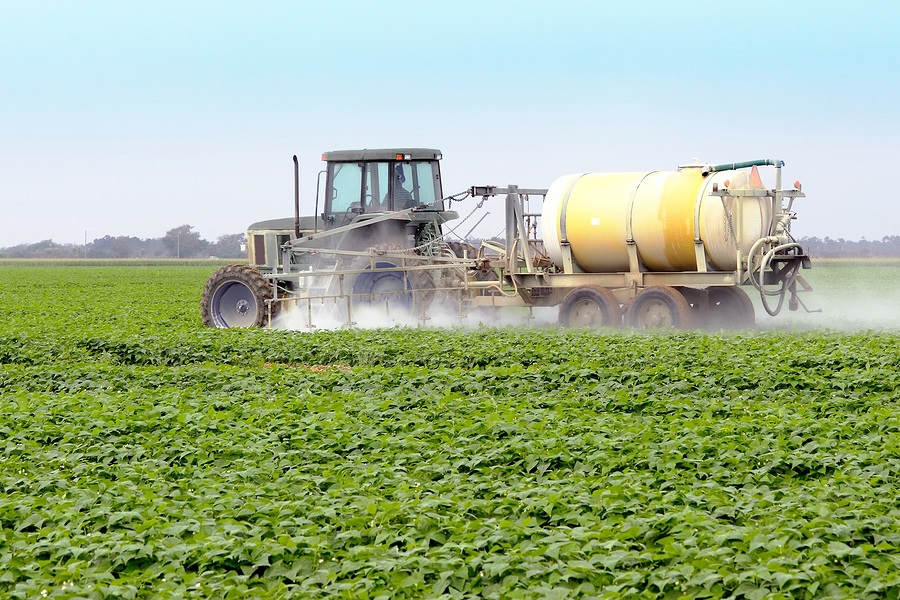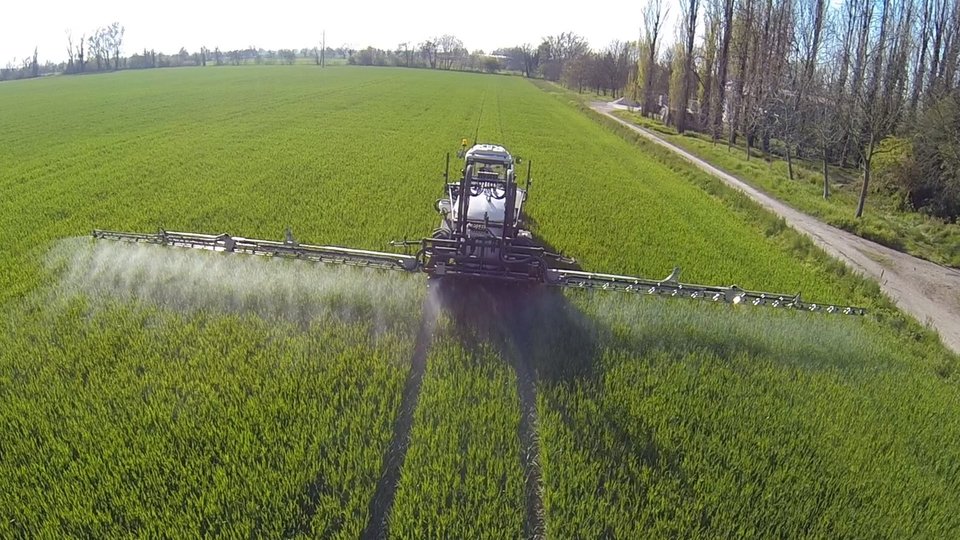9 diseases linked to pesticides
(NaturalHealth365) The scientific evidence is unmistakable: exposure to pesticides is associated with elevated rates of some of the most significant – and potentially deadly – diseases of our lifetime. Yet, there continues to be a huge disconnect between the very high – and in some cases, epidemic rise of these diseases and the need for tighter controls (or elimination) of the world’s most toxic pesticides.
In understanding why that disconnect occurs, it’s hard to overlook the power of the biotech industry and its powerful, well-funded influence over government regulators. But the problem exists beyond the farm gate. Studies show that 28 out of the 40 most commonly used pesticides in schools have been linked to cancer, while 79 have been linked to other serious or life-threatening diseases or disorders. Of the 30 chemicals most likely to be used in lawn care, 19 are known to cause cancer while 49 are linked to nervous system, reproductive and fetal disorders.
Pesticides linked to many of the most serious health problems of our time
The Pesticide-Induced Disease (PID) database, created by the advocacy group Beyond Pesticides, is a compilation of studies from around the globe linking the use of pesticides to disease and other medical conditions. The result is a shockingly large volume of scientific data reflecting the serious dangers of chemical exposure, with children at even greater risk than adults.
Here are just nine of the long list of diseases and conditions with significant scientific evidence to link their cause to pesticides:
1. Cancer
Pesticides have been identified as a cause of many types of cancer, from bladder, brain and bone cancers to leukemia and liver cancers to prostate and pancreatic cancers. The PID database includes research on nearly 30 different types of cancer and their link to pesticide exposure, but perhaps the most well-documented are cancers originating in the lymph system, including Hodgkin’s lymphoma and non-Hodgkin’s lymphoma.
There are nearly 60 studies included in the PID database for lymph system cancers alone. These cancers are the 3rd most common cancers in children and the 7th most often diagnosed cancers in adults today. There has been a steady increase of these cancers, with rates doubling since the early 1970s. One study cited in the PID database analyzed data from U.S. children ages 0 to 14, diagnosed with cancer between 1995 and 2001. Children living in agricultural counties were found to have an elevated risk of malignant bone tumors, osteosarcoma, Hodgkin’s lymphoma, and the rare Ewing’s sarcoma.
2. Alzheimer’s disease
Known as the most common form of dementia, Alzheimer’s disease is a progressive, fatal disease of the brain affecting as many as 5.3 million Americans, according to the Alzheimer’s Association. There has been a steep increase in the number of Alzheimer’s disease diagnoses in recent decades that is roughly in line with the country’s increase in pesticide use a few decades earlier that would have exposed today’s patients to these toxins.
Numerous studies have found increased dysfunction of cognitive, psychomotor and behavioral skills – as well as greater incidence of Alzheimer’s disease and dementia – in those exposed to pesticides. Insecticides seem to be particularly dangerous in terms of neurotoxicity.
3. Diabetes
Research is beginning to reveal a link between pesticides and type 2 diabetes. Widespread exposure to organophosphate pesticides in particular appear to induce obesity, leading to a diabetic reaction in mice. The pesticide was found to increase food ingestion, glucose and total cholesterol concentrations. This led to a significant increase in diabetic profiles.
Over half of the people with diabetes worldwide live in Asia, regions known for pollution problems. Growing scientific evidence continues to link environmental pollutants, including pesticides, with increase prevalence of diabetes. In another study, pesticide applicators and their spouses were shown to be at greater risk of diabetes following exposure to at least five types of commonly used pesticides.
4. Parkinson’s disease
Parkinson’s disease is the second most common neurodegenerative disease, and occurs when nerve cells of the brain are damaged so that they no longer produce dopamine, which helps control muscle movement. At least one million Americans suffer from Parkinson’s disease, with about 50,000 new diagnoses made each year.
It is known that genetics plays a role in fewer than one percent of cases. Growing epidemiological and toxicological evidence point to pesticide exposure, as well as gene-pesticide interactions as a leading cause. In one study published in the International Journal of Epidemiology, subjects were found to increase their odds of Parkinson’s disease by 47 percent through frequent use of household pesticides. Those who frequently used pesticides containing organophosphates (OPs) were found to increase their likelihood of Parkinson’s by 71 percent.
5. Endocrine disruption
Endocrine disruption is a condition where chemicals from pesticides, household cleaners, plastics, disinfectants and other chemical-based substances, enter the body where they disrupt healthy hormone balance and cause disease, as well as development and reproductive problems. The endocrine system consists not only of hormones, but the glands that produces them, including thyroid, gonads, adrenal and pituitary. The endocrine system is crucial to human development, growth, reproduction, and behavior.
Scientific evidence suggests these chemicals wreak their havoc by imitating the action of naturally produced hormones, causing chemical reactions in the body. Further, research has revealed that these chemicals are able to block hormone receptors in cells, stopping normal hormonal action, and also alter the concentration of natural hormones by interfering with hormonal synthesis, metabolism, excretion and transport.
6. Birth defects
Birth defects are the leading cause of death for babies in their first year. In one study, Mexican-American women were found at increased risk of giving birth to infants with neural tube defects. In another study published in the Occupational and Environmental Medicine journal, analysis showed women exposed to endocrine disrupting chemicals n the job had a two-fold greater risk of hypospadias and five-fold greater risk of multiple defects.
The connection between pesticides and birth defects also came into the public eye in 2005. Three babies born to mothers who worked at Ag-Mart Produce, a company producing chemically treated produce and other agricultural products, were born with severe birth defects.
7. Asthma
As pesticide use has increased, so has the rate of asthma, skyrocketing to epidemic levels in the U.S. since the mid-1980s. About 16 million people suffer from asthma in the U.S. alone. This serious chronic disorder can be life-threatening. As part of the Agricultural Health Study involving 25,814 farm women, a total of seven insecticides, 2 herbicides and 1 fungicide were found to be significantly associated with atopic asthma, while the pesticide permethrin was associated with nonatopic asthma.
Researchers have found that pesticide exposure can cause a poisoning effect linked to asthma. Sadly, governmental policy continues to allow use of pesticides known to cause asthma and a disproportionate number of children from low-income populations are known to suffer from asthma – contributing greatly to school absenteeism and the cycle of poverty.
8. Learning and developmental disorders
One in six U.S. children are known to have one or more development disabilities, including learning disorders, serious behavioral disorders and emotional disorders. Scientists believe the sharp increase in physical and mental disorders in children is due to the increased amount of toxic chemicals in the environment contributing to developmental and neurological damage.
Children’s organs are still developing, opening the door for pesticides to cause the greatest amount of damage. A child’s brain is much more susceptible to the effects of toxic pesticides than an adult brain. This heightened vulnerability, during which the brain is undergoing a series of highly complex processes, begins during fetal development and continues into adolescence. Research has shown that even at low exposure levels, pesticides can cause subclinical effects that can adversely effect intelligence or behavioral changes.
9. Reproductive and sexual dysfunction
Assessments focusing on environmental exposure, as well as wildlife, laboratory and epidemiologic studies show exposure to low-level environmental contaminants, such as pesticides and other chemicals, subtly undermines the ability to reproduce. Effects can occur in both male and female reproductive systems.
In one study involving rats, investigators found that even low-dose exposure to pesticides caused problems with reproductive development. In a Russian study of boys living in a known dioxin-contaminated region were found to exhibit later pubertal onset with higher dioxin concentrations.
References:
https://www.beyondpesticides.org/assets/media/documents/health/pid-database.pdf
https://www.nrdc.org/stories/24-d-most-dangerous-pesticide-youve-never-heard
https://www.thenation.com/article/pesticide-industry-vs-consumers-not-fair-fight










